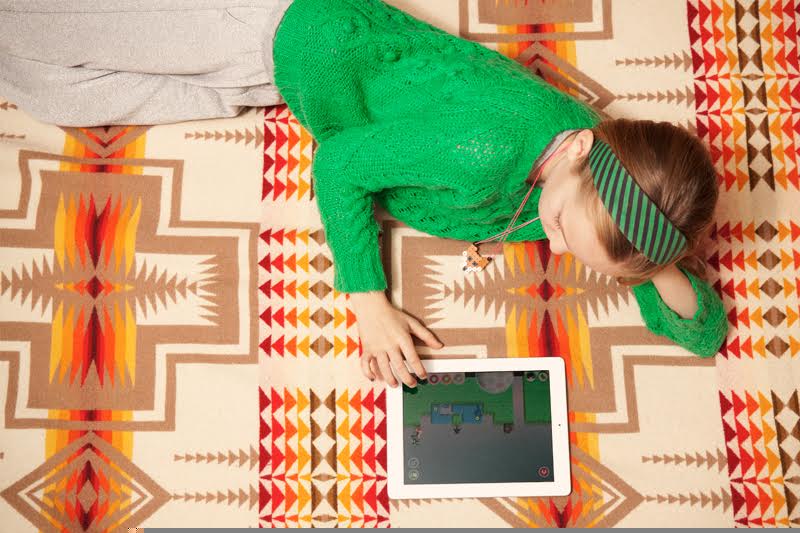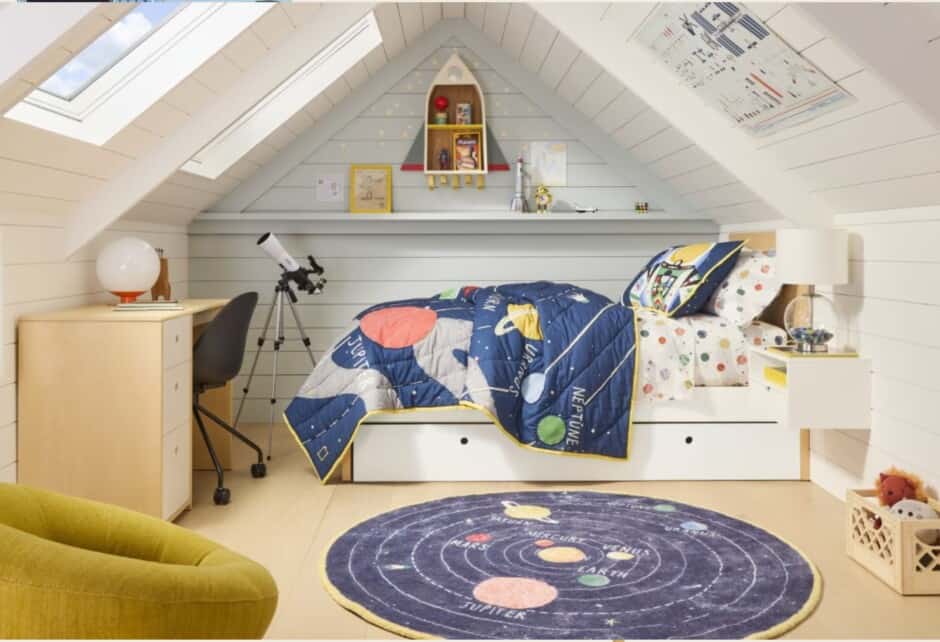
The Rapid Evolution Of Media Use By Children Aged 0-8
Written by Katie Hintz-Zambrano
Photography by Photographed by Shannon Sinclair
To every parent—and non-parent—it’s plain to see: children’s use of technology is not only pervasive today, it continues to change at a rapid, break-neck pace. Thanks to nonprofit, nonpartisan organization Common Sense Media, we now have solid stats behind the media usage of our littlest kids, aged 0-8, over the last six years.
In its brand-spanking-new 2017 report, The Common Sense Census (which the company also conducted in 2011 and 2013), the organization polled 1,400 parents from all over the United States, of all different income and education levels, and racial and ethnic backgrounds to deliver a look at how children’s technology use has evolved over the past 3-6 years. And let us tell you, it’s changed a whole lot.
Some of the key findings of the study include the following:
*Total Screen Time Has Increased (But Not Much). Today’s children aged 0-8 spend an average of 2 hours and 19 minutes on screen media each day. This is a slight increase from 2013 (1 hour and 55 minutes) and 2011 (2 hours and 16 minutes). It’s the types of screens children are viewing in 2017 that has shifted the most.
*Mobile Screen Time Is Growing. While the majority of screen time is still spent with TV, DVDs, videotapes, computers, and videogames, mobile screen time is growing rapidly. In 2017, over one-third (35%) of screen time is on mobile devices. In 2011, only 4% was. The number of minutes children spend on mobile media has also once again tripled, from 5 minutes in 2011, to 15 minutes a day in 2013, and now 48 minutes a day in 2017.
*YouTube, Netflix, and Hulu Rise In Popularity. In 2017, children aged 0-8 spend an average of 17 minutes a day watching online videos from sources like YouTube. Meanwhile, today’s families are more likely to have a subscription video service such as Netflix or Hulu (72% of families have) than cable TV (only 65% of families have).
*Smartphones Are In (Nearly) Every Home. Across all levels of society, 95% of children 0-8 live in a home with a smartphone. This is up from 63% in 2013 and 41% in 2011. Likewise, 78% of children live in a home with a tablet in 2017, which is up from 40% in 2013 and only 8% in 2011. Out of the children with tablets in their homes, 42% have their own tablet. This is a huge shift from just 4 years ago, when only 7% had their own tablet.
*Bedtime Viewing Still Big. Despite pediatrician recommendations to the do the contrary, 49% of children ages 0-8 often or sometimes watch TV or play videogames within an hour of bedtime. Meanwhile, 42% say the TV is “always” or “most of the time”on in their homes, leading to background media, which the American Academy of Pediatrics ties to negative effects.
*High Household Income Families vs. Low Household Income Families. Children living in families with a median household income below $30,000 spend an average of 1 hour and 39 minutes more time with screen media than those from higher income families (making over $75,000 a year). In 2017, the lower income kids average 3 hours and 29 minutes of screen time vs. high income kids with 1 hour and 50 minutes. The same trend follows children from homes of lower parent education (2 hours and 50 minutes) vs. kids from homes of higher parent education (1 hour and 37 minutes). There are no statistically significant differences in overall screen time by gender or race/ethnicity. The “digital divide” (access to high-speed internet and ownership of computers, tablets, and smartphones) between lower income and higher income kids is still present in 2017 (a 25% gap in home computers and 22% gap in internet), but it’s much smaller than in years past.
*Screen Time For Babies And Toddlers Is Down. Media usage among children under 2 is trending downward slightly, from 58 minutes a day in 2013 to 42 minutes a day in 2017. Common Sense Media attributes this 16-minute difference to a steep decline in DVD viewing, and a modest increase in mobile device viewing. Overall, 71% of children under 2 have watched TV. And, along with 42 minutes of screen time each day, 0-2 kids are enjoying 23 minutes of music a day and 22 minutes of being read to (note: only 43% of babies under 2 are read to daily, a stat the AAP is keen to drive way upwards).
*Biggest Screen Time Concerns. Amongst 2017 parents, 78% are concerned about the violent content on screens, 77% are concerned about sexual content, 70% are concerned about the amount of time spent with screens, 69% are concerned with exposure to materialism and advertising. Meanwhile, 67% of today’s parents say screen media helps their children’s learning and 57% say it aids creativity.
*Apps On The Rise. In 2017, 71% of parents have downloaded an app for their child (24% have for children ages 0-2, compared to 80% for 2-4 year olds and 88% for 5-8 year olds). This number is up from only 40% in 2011 and 68% in 2013. For today’s parents who are downloading apps, 45% are downloading free apps only, meanwhile 25% have downloaded paid apps.
So, what can parents do with all of this information? If nothing else, monitor how both your and your child’s approach to screen media is changing. There’s no doubt about it, screens are a big part of our kids’ lives—starting, often, at birth. In the years to come, virtual reality, voice-activated assistants, and internet-connected toys will play an even more prominent role in all of our homes and schools. In fact, Common Sense Media found that 11% of today’s children aged 0-8 live in a home with a virtual reality headset, 10% have “smart toys,” and 9% use voice-activated devices such a Google Home or Amazon Echo. We can only imagine how these percentages will rise in the next Common Sense Census report in three years from now.
Another point to take away: Although almost all of our children are engaged with screens, Common Sense found that only 20% of parents say they know the American Academy of Pediatrics‘ recommendations around children’s screen time usage. The AAP has been most successful in reaching white, higher-income, and college-educated parents. One interesting fact was that Hispanic/Latino parents reported being the least aware of the AAP recommendations, yet they were most interested (69%) in learning more about them. For readers who want to educate themselves around the AAP’s guidelines, check out their resources here.
For more on this topic, check out our Mother piece on 10 Moms Screen Time Rules And Realities. You can also read Common Sense Media’s full Census report here.
Share this story



